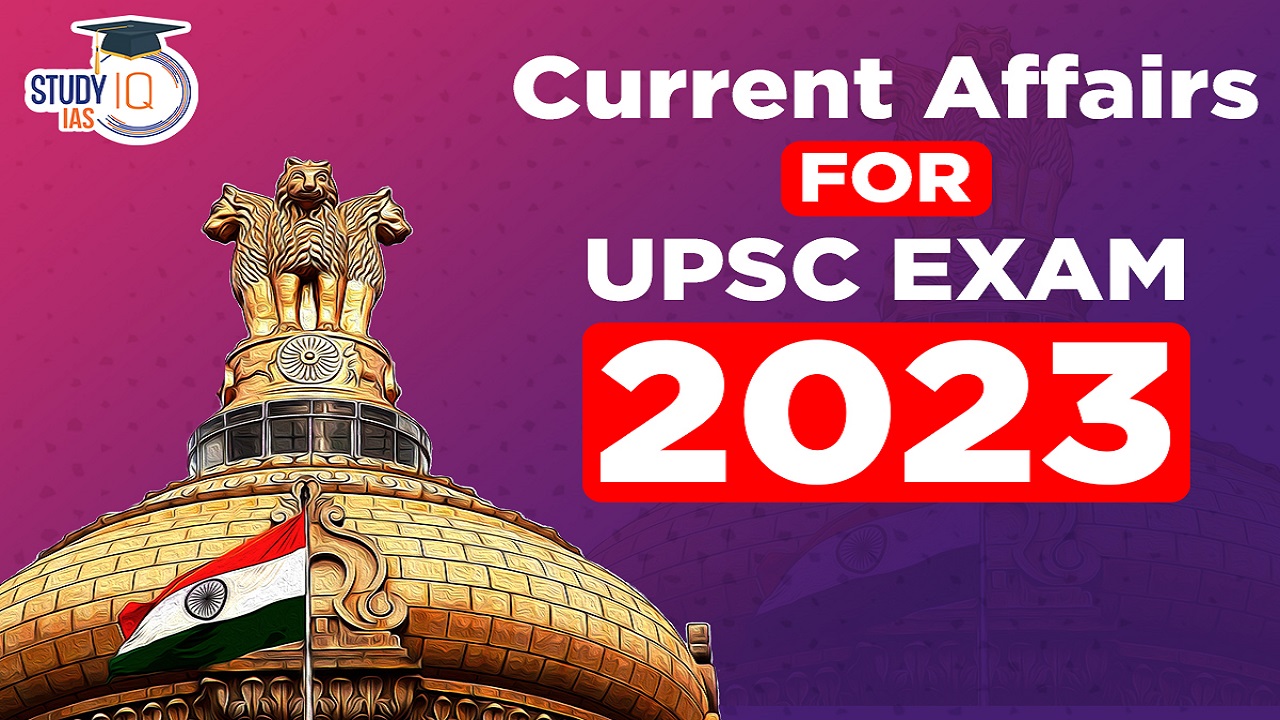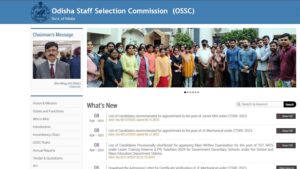Table of Contents
Current Affairs 21st September 2023 for UPSC Prelims Exam
Assam Accord
Context: A Constitution Bench of the Supreme Court will hear petitions challenging the constitutionality of Section 6A which was inserted in the Citizenship Act, 1955, following the Assam Accord of 1985.
About Assam Accord
- Signed in 1985 between the Union government and the All-Assam Students’ Union at the end of a 6-year-long agitation against the influx of migrants from Bangladesh into the state of Assam.
- The Accord sets March 24, 1971, as the cut-off date to determine who is considered a foreigner in the state of Assam.
- Anyone who had come to Assam before midnight on that date would be an Indian citizen, while those who had come after would be dealt with as foreigners.
- This date is significant because it marks the onset of the mass influx of illegal immigrants from Bangladesh into Assam, beginning with the Bangladesh Liberation War.
- Implementation: To implement the Accord, a new Department has been established in the name of “Implementation of Assam Accord Department” in 1986.
- The same cut-off date was used in updating the National Register of Citizens (NRC).
About the National Register of Citizens (NRC)
- It is an official record containing the demographic information about all those individuals who qualify as citizens of India as per the Citizenship Act, 1955.
- It was first prepared after the 1951 Census of India and since then it has not been updated until recently.
- In 2013, the Supreme Court ordered the Updation of NRC in all parts of Assam. The process officially started in 2015.
- The NRC of 1951 and the Electoral Roll of 1971 (up to midnight of 24 March 1971) are together called Legacy Data.
| National Population Register (NPR) | National Register of Citizens (NRC) |
|
|
Current Affairs 20th September 2023 for UPSC Prelims Exam
National Judicial Data Grid
Context: Recently, the Supreme Court has enrolled in the National Judicial Data Grid (NJDG) portal.
About the National Judicial Data Grid (NJDG)
- It’s a comprehensive database of orders, judgments, and case details from District and subordinate Courts and High Courts across the country.
- It was built as part of Phase II of the e-Courts Integrated Mission Mode Project.
- Developed by: National Informatics Centre (NIC) in coordination with the Computer Cell, Registry of the Supreme Court (SC).
- The portal is inconsonance with the National Data Sharing and Accessibility Policy (NDSAP).
- NDSAP was formulated by the Ministry of Science and Technology in 2012.
- NDSAP is empowered by the Section 4(2) of the Right to Information (RTI) Act, and makes it the responsibility of every public authority to share their data Suo motu at regular intervals.
- Significance:
- It works as a monitoring tool to identify, manage & reduce pendency of cases.
- It also facilitates better monitoring of court performance and systemic bottlenecks, and, thus, serves as an efficient resource management tool.
- Progress:
- All High Courts have joined the NJDG through web services.
- To track land dispute cases, Land Records data of 26 States have been linked with NJDG.
- World Bank praised the National Judicial Data Grid in the Ease of Doing Business report for 2018.
About the e-Courts Integrated Mission Mode Project
- Conceptualised on the basis of “National Policy and Action Plan for Implementation of Information and Communication Technology (ICT) in the Indian Judiciary – 2005”.
- It was a part of the National e-Governance Plan, which was launched to make all government services available to the citizens of India via electronic media.
- Main objectives of the project:
- To provide efficient & time-bound citizen-centric service delivery.
- To develop, install & implement decision support systems in courts.
- To automate the processes to provide transparency of Information access to its stakeholders.
- To enhance judicial productivity, to make the justice delivery system affordable, accessible, cost effective & transparent.
- The e-Committee of the Supreme Court is charged with overseeing the e-Courts Project.
- The Chief Justice of India (CJI) is the patron-in-chief and chairperson of the e-committee.
- Phases: Phase I was implemented during 2011-2015 & Phase II was started in 2015.
- Important initiatives undertaken by the project:
- E-Courts services mobile application.
- Virtual courts.
- National Judicial Data Grid (NJDG).
- E-Sewa Kendras.
- Video-Conferencing (VC) of court proceedings.
- Justice Clock, to bring awareness to the public about justice sector.
Pink Diamonds
Context: A recent research has uncovered the geological processes that led to the formation of pink diamonds.
More on News:
Findings of the Study:
- The study identified the missing ingredient for the formation of pink diamonds, which had been a mystery, which is the geological event that transported pink diamonds from deep within the Earth to the surface.
- The study determined the age of the Argyle mine to be approximately 1.3 billion years, where many pink diamonds were found. This age corresponds to the breakup of the first supercontinent, known as Nuna.
- These diamonds at the Argyle mine were formed due to immense pressure during collisions between western Australia and northern Australia around 1.8 billion years ago.
About Pink Diamonds
- Pink diamonds are highly expensive and extremely rare gemstones (third-rarest type of diamond after red and blue diamonds).
- Australia accounts for more than 90% of pink stones formed on Earth while the remaining 10% is found in Brazil, South Africa, India, Russia, and Canada.

Formation:
- Carbon Formation:
- Like other diamonds, pink diamonds are primarily composed of carbon atoms.
- These carbon atoms are subjected to intense pressure and heat deep within the Earth’s mantle, typically more than 150 kilometres below the Earth’s surface.
- At these depths, carbon atoms arrange themselves into the crystal lattice structure that characterises diamonds.
- Pressure:
- The second key factor in the formation of pink diamonds is pressure.
- Unlike traditional clear diamonds, pink diamonds require just the right amount of additional pressure to alter their crystal lattice structure and introduce colour.
- This pressure causes defects or distortions in the lattice, resulting in the absorption of certain wavelengths of light and giving the diamond its pink hue.
- If the pressure is too low, the diamond remains clear, and if it’s too high, the diamond may turn brown or another colour.
- Volcanic Activity:
- Another important factor in the formation of pink diamonds is the volcanic event that brings these diamonds to the Earth’s surface, where they can be mined.
- Pink diamonds are typically found in volcanic rock formations called kimberlites or lamproites.
- These volcanic pipes or conduits are responsible for transporting diamonds from deep within the Earth to the surface during volcanic eruptions.
- Lab grown pink diamonds: Pink diamonds can be crystallised using either the chemical vapour deposition method (CVD) or the high-pressure, high-temperature method.
Related Information:
Diamonds:
- Diamonds are naturally occurring, precious gemstones known for their exceptional brilliance, hardness, and clarity.
- They are composed of carbon atoms arranged in a crystal lattice structure.
- Diamonds are formed deep within the Earth’s mantle under high pressure and temperature conditions. They are brought to the surface through volcanic eruptions in kimberlite or lamproite pipes.
- Russia is the world’s top diamond-producing country, followed by Botswana, Canada, and Australia.
- Some well-known diamond mines: Jwaneng Diamond Mine (Botswana), Venetia Diamond Mine (South Africa), Argyle Diamond Mine (Australia), Catoca Diamond Mine (Angola).
- Madhya Pradesh is the top producer of diamonds in India (Majhgawan mines in the Bundelkhand area) producing around 32 percent of the country’s diamonds.
- Alongside jewellery, they are used for several industrial purposes like cutting, grinding, and drilling tools.
- Diamonds are graded based on the “Four Cs”: carat weight, cut, color, and clarity, which determine their quality and value.
Delimitation
Context: The Union Home Minister said that the next government will carry out the delimitation exercise soon after the 2024 Lok Sabha polls.
Understanding Delimitation
- Delimitation is the act of redrawing boundaries of Lok Sabha and state Assembly seats to represent changes in population.
- Objectives of Delimitation:
- To provide equal representation to equal segments of a population.
- Fair division of geographical areas so that one political party doesn’t have an advantage over others in an election.
- To follow the principle of “One Vote One Value”.
- Constitutional provisions:
- Article 82: This provides the Parliament with the authority to enact a Delimitation Act after every Census.
- Article 170: This provides for the States to get divided into territorial constituencies as per the Delimitation Act after every Census.
- Who carries out delimitation? Delimitation is carried out by an independent Delimitation Commission.
- The delimitation commission is a high-power body whose orders have the force of law.
- Composition: The delimitation Commission is appointed by the President of India includes following members:
- Retired Supreme Court judge
- Chief Election Commissioner
- Respective State Election Commissioners
- Functions:
- To determine the number and boundaries of constituencies.
- To identify seats reserved for Scheduled Castes and Scheduled Tribes.
- Powers:
- The Constitution mandates that the Commission’s orders are final and cannot be questioned before any court as it would hold up an election indefinitely.
- The copies of its orders are laid before the House of the People and the State Legislative Assembly concerned, but no modifications are permissible therein by them.
- The process of delimitation:
- After the delimitation commission determining the number and boundaries of constituencies, the draft proposals of the Commission are published for public feedback.
- The Commission also holds public sittings. After hearing the public, it considers objections and suggestions, and carries out changes, if any, in the draft proposal.
- The final order is published in the Gazette of India and the State Gazette concerned and comes into force on a date specified by the President.
- History of delimitations in India:
- In India, delimitation commissions have been set up four times — 1952, 1963, 1973 and 2002 under the Acts of 1952, 1962, 1972 and 2002.
- The last delimitation exercise that changed the state-wise composition of the Lok Sabha was completed in 1976 and done on the basis of the 1971 census.
- 91st Constitutional Amendment Act, 2003 frozen the delimitation exercise till 2026.
Asian Development Bank (ADB)
Context: The Asian Development Bank has lowered India’s growth forecast to 6.3% for the financial year 2023 from its earlier projection of 6.4%.
More on News
- This economic growth estimate was revised down due to slowing exports and the likely impact of erratic rainfall on agriculture output.
- Reduced exports could dent the Indian economy besides the global geopolitical tensions, which may further create economic uncertainty and lead to a rapid rise in global food prices.
- Monsoon rainfall under the influence of a developing El Niño has led to erratic weather patterns, including flooding in certain regions and deficient rains of late.
- The erratic rainfall patterns have resulted in damage to the rice crop in particular and lower sowing for pulses in the kharif season which has reduced the growth of the farm sector.
About Asian Development Bank (ADB)
- ADB is an international development finance institution.
- It was established in 1966 under the auspices of the United Nations organization now known as ESCAP (Economic and Social Commission for Asia and the Pacific).
- Aim: ADB envisions a prosperous, inclusive, resilient, and sustainable Asia and the Pacific, while sustaining its efforts to eradicate extreme poverty in the region.
Functions:
- ADB assists members and partners by providing loans, technical assistance, grants, and equity investments to promote social and economic development.
- It also provides financing to certain private sector projects as well as public-private partnerships.
- The ADB regularly facilitates policy dialogues and provides advisory services.
- They also use co-financing operations that tap official, commercial, and export credit sources while providing assistance.
Funding:
- ADB raises capital regularly through the international bond markets.
- The ADB also relies on member contributions, retained earnings from lending, and the repayment of loans for the funding of the organization.
Members: It has 68 members—of which 49 are from within Asia and the Pacific and 19 outside.
- India is a regional member country of the ADB.
Governance: The governing bodies of ADB are:
- Board of Governors : In the Board of Governors, all member countries are represented with voting power proportional to their contributions to ADB’s capital.
- Board of Directors : Board of Directors has 12 seats, in which each director represents a single member or a constituency of members.
- The Board of Governors has delegated most of its powers to the Board of Directors, which has full time members.
Shareholders: ADB’s five largest shareholders are:
- Japan and the United States (each with 15.6% of total shares),
- People’s Republic of China (6.4%),
- India (6.3%),
- Australia (5.8%).
Headquarters: Manila, Philippines.


 Daily Quiz 18 April 2025
Daily Quiz 18 April 2025
 OSSC CGL Syllabus 2025 and Exam Pattern ...
OSSC CGL Syllabus 2025 and Exam Pattern ...
 AI and its Regulation in India, Limitati...
AI and its Regulation in India, Limitati...





















